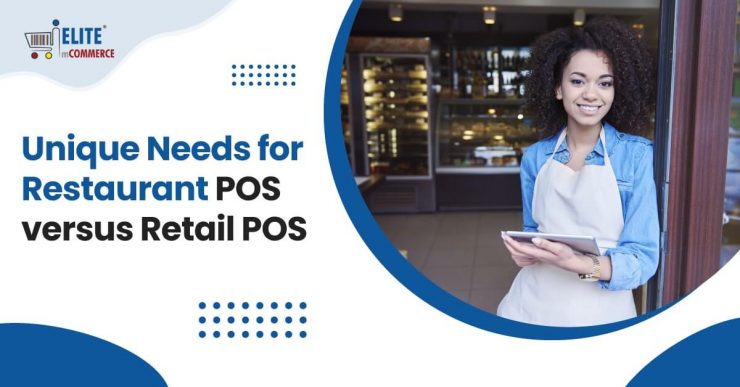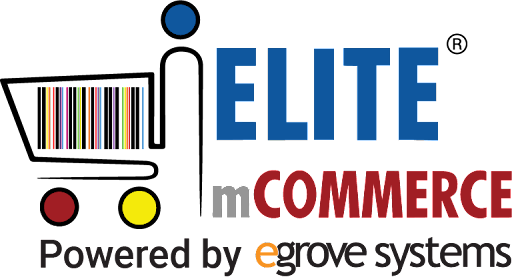Finding the right POS system for a restaurant can help a restaurant improve its organization, saving money, labour, and time. However, it’s often difficult to switch to a new system and find one with the right features. Normal retail POS systems tend to be made for different considerations and goals from restaurants, so choosing a restaurant-specific model can be the first step to making sure it suits your restaurant’s needs. Here are some key comparisons between retail and restaurant POS systems and their priorities.
Inventory Management
Inventory is a crucial element often integrated into a point-of-sale system, keeping track of what is ordered and is on hand to be sold. However, retail and restaurants stock and consume inventory in different ways:
- A retail store may track items that are bought from suppliers and sold to customers through unique identifiers like bar codes.
- Restaurants will often end up deciding their own way to track items like fresh produce, meat, or other ingredients as they are purchased and expended. Ingredient-level inventory management is difficult to approximate using a retail POS, but weight, volume, and other custom solutions can make it easier for chefs to track regular usage and know when to order more.
- Tracking expiration dates of perishables is also a feature that retail POS systems won’t handle. Retail systems do have features to re-order items anticipated to go out of stock, but it’s important for restaurants to monitor more closely and predict when resupply is needed.
Flexibility in Setting up Payment and Order Options
- A retail POS needs to track shipping, returns, and refunds over a period of days or weeks, but restaurants rarely need to consult the details of an order after it’s served.
- Instead, a restaurant POS needs to be adjustable and flexible at the time of ordering and payment. Customers might add desserts and drinks as a meal goes on, change their mind about an order, or split the bill at the end. A restaurant POS can provide the flexibility of making all these small changes to an order total on the fly, so waitstaff aren’t slowed down unnecessarily.
Integration Covers Technology Needs and Streamlines Delivery
- According to Toast’s 2019 Restaurant Success Report, 26% of restaurants use one technology vendor, 22% use three vendors and 26% use four or more. The fewer technologies you employ, the easier it is to manage them and the less investment and training is required.
- A study from Second Measure reported that DoorDash, Grubhub, Uber Eats, and Postmates made up 44%, 23%, 22%, and 8% of U.S. meal delivery sales in August 2020, totalling 97%. With third-parties playing such a large role, integrating POS with delivery apps has the potential to save labour and improve efficiency, as Chowly did when integrating DoorDash into POS systems, letting restaurant sales channels take orders and relay them to DoorDash drivers rather than manually input them.
Portability, Interconnectivity, and Mobility
- Retail POS systems are introducing new hardware to receive digital payment methods, but mobile POS terminals are not as vital in the traditional counter and cash register setup.
- Restaurant POS systems like Lavu and Breadcrumb were early adopters of iPad-based POSes, which helps mobile waitstaff enter orders on the go, transfer them to the kitchen staff, and quickly register every order in the system.
- Online ordering needs to come up quickly and be processed immediately so it can be delivered within an hour, in comparison to retail where shipping is expected to take a few days.
- Being able to access the system from outside the storefront is a useful feature for restaurants run as small/family enterprises who do business at their own hours while on the go.
Read also :- Enable Buy Now, Pay Later With POS integration to Boost Sales
Connect With Customers Effectively
- Retails POS systems are integrating with customer relations management systems or covering the role. Retail businesses use their technology to track customer purchases, understand their buying habits, send email marketing, and offer loyalty programs.
- Restaurants can make use of POS-based solutions for customer relations management. Recognizing regulars and their habits, understanding the most popular dishes and what hours are busiest can give you an advantage in giving your restaurant a unique appeal and personality.
Other Considerations:
Restaurants should expect the price of a restaurant POS to be higher due to catering to a more niche market and offering custom features, but a POS that is not well-suited for a restaurant can lead to more costs and losses due to inefficiency. Restaurants should also look for the ability to manage tables as a unit, book reservations, and integrate with accounting software.









Add comment